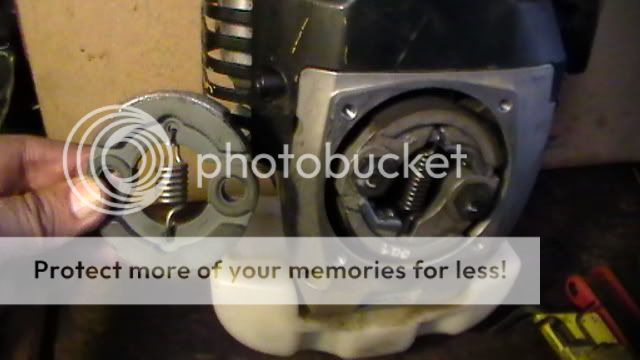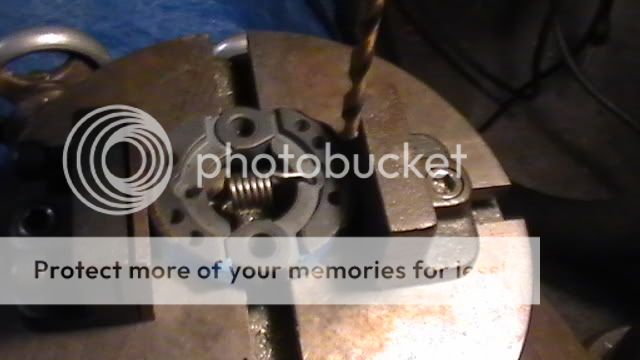I am interested in modifying a Staton heavy duty centrifigal clutch to replace the factory Sabaru 35cc clutch. The factory clutch idles at 2400 rpm and engages at 4200 rpm, almost half of the throttle capability of the engine which is too non-responsive and slips too much for my tastes.
Staton warns that the engine must be capable of idling at or below 2000 rpm, which mine is not comfortable idling at without stalling intermittently.
The heavy duty clutch weighs 200 grams while the factory comes in at 95 grams but both use different release springs so engagement comparisons are not possible due to spring tension differences.
I plan on drilling lightening holes in the heavy duty clutch in order to retard its engagement openning timing, shooting for a 3000 rpm engagement.
How much weight do I need to remove from the heavy duty clutch to get a 3000 rpm engagement? Has anybody done this before or have a means of ballpark calculating the amount of weight removal?
Contacted Staton about this but he had no idea about the needed weight removal.
Thanks, Don in Redondo.
Staton warns that the engine must be capable of idling at or below 2000 rpm, which mine is not comfortable idling at without stalling intermittently.
The heavy duty clutch weighs 200 grams while the factory comes in at 95 grams but both use different release springs so engagement comparisons are not possible due to spring tension differences.
I plan on drilling lightening holes in the heavy duty clutch in order to retard its engagement openning timing, shooting for a 3000 rpm engagement.
How much weight do I need to remove from the heavy duty clutch to get a 3000 rpm engagement? Has anybody done this before or have a means of ballpark calculating the amount of weight removal?
Contacted Staton about this but he had no idea about the needed weight removal.
Thanks, Don in Redondo.





